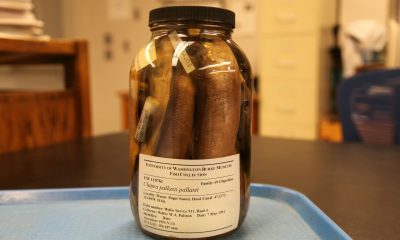By Gwyn Wright via SWNS
Antibiotic residues in wastewater and sewage works are contributing to dangerous resistance, warns a new study.
The findings are a threat to human health as antibiotic resistance could plunge us back to the dark days before penicillin.
The Swedish research team found the residue of 92 antibiotics in the West Pacific Region which includes China and 45 of them in the South East Asia region which includes India.
Concentrations of antibiotics which exceed levels considered safe for resistance development were found in wastewater, sewage works and seas where waste was eventually dumped.
The team said antibiotics found in wastewater and sewage works pose the highest risk.
In seas, the highest likelihood of levels exceeding the threshold considered safe for resistance development was observed for the antibiotic ciprofloxacin in drinking water in China and the West Pacific Region.
Study first author Dr. Nada Hanna, of the Karolinska Institute in Stockholm, said: “Our results can help decision-makers to target risk reduction measures against environmental residues of priority antibiotics and in high-risk sites, to protect human health and the environment.
“Allocating these resources efficiently is especially vital for resource-poor countries that produce large amounts of antibiotics.
"Antibiotic residues in wastewater and wastewater treatment plants may serve as hotspots for the development of antibiotic resistance in these regions and pose a potential threat to human health through exposure to different sources of water, including drinking water.”
Bacteria becoming resistant to antibiotics is a global threat that can lead to untreatable bacterial infections in animals and humans.
Antibiotics can enter the environment when they are produced, consumed and thrown away.
Antibiotic residues in the environment, such as in wastewater and drinking water, can contribute to the emergence and spread of dangerous resistance.
For the study, the team analyzed 218 reports from the West Pacific Region and 22 from the South East Asia region in the existing literature published between 2006 and 2019.
They also used a method called Probabilistic Environmental Hazard Assessment to determine where the concentration of antibiotics is high enough to likely contribute to antibiotic resistance.
The findings were published in The Lancet Planetary Health.

 Parenting7 days ago
Parenting7 days ago
 Lifestyle6 days ago
Lifestyle6 days ago
 Good News3 days ago
Good News3 days ago
 Broadcast1 week ago
Broadcast1 week ago
 Health3 days ago
Health3 days ago
 Broadcast1 week ago
Broadcast1 week ago
 Money1 week ago
Money1 week ago
 Wildlife2 days ago
Wildlife2 days ago






















